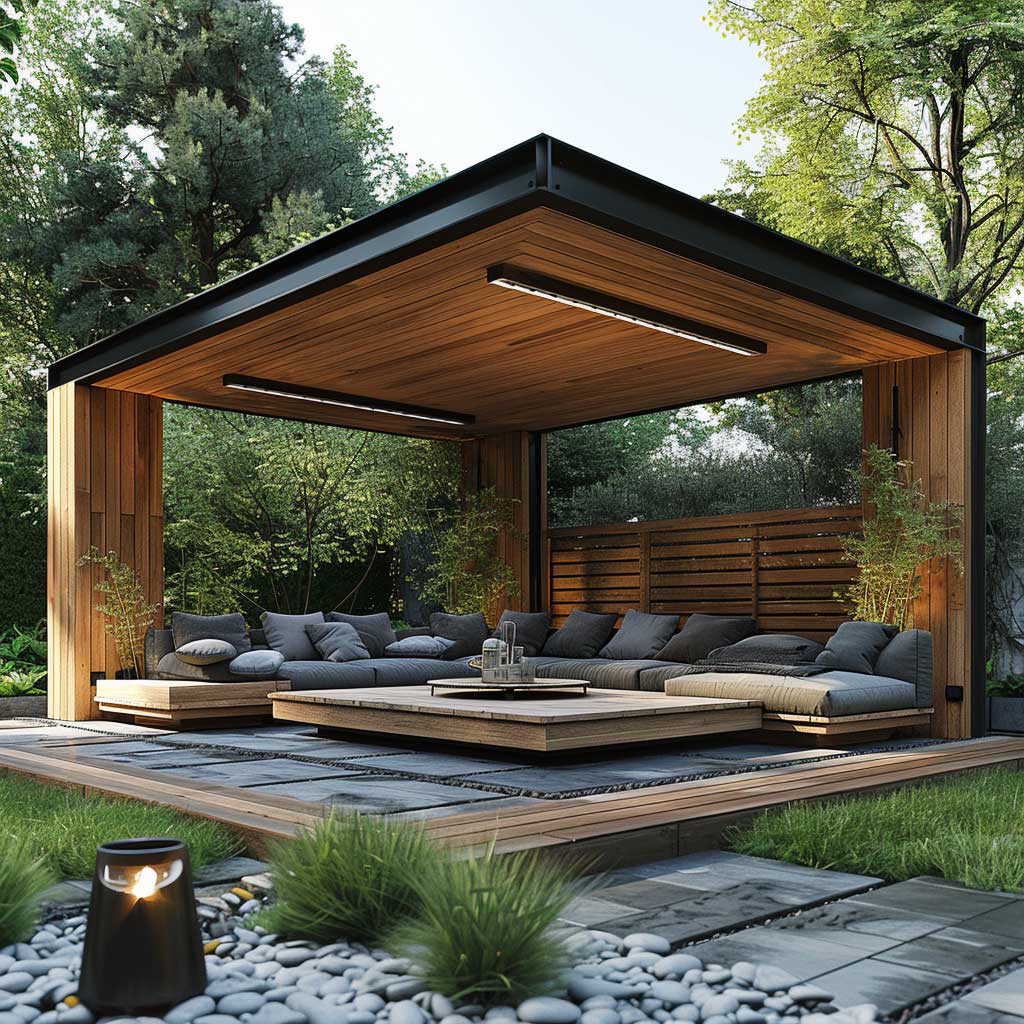Creating the perfect guest home garden is a thoughtful way to welcome visitors, providing them with a serene and beautiful outdoor space to relax and enjoy. Whether your guest home is a standalone building, a cottage, or an annex to your main house, the surrounding garden can enhance the overall experience. A well-designed garden offers a sense of retreat and privacy while being functional and easy to maintain. Here are some essential elements to consider when designing the perfect guest home garden.
1. Focus on Comfort and Relaxation
The main goal of a guest home garden is to provide a comfortable and inviting space where guests can unwind. Incorporate cozy seating areas, such as a bench, Adirondack chairs, or a small patio set, where visitors can sit and enjoy the view. Consider placing seating in shaded areas or near flowering plants, creating a peaceful environment that encourages relaxation.
For added comfort, include soft cushions, outdoor rugs, or even a hammock for lounging. If space allows, a small fire pit or outdoor heater can extend the usability of the garden into cooler evenings, making it a year-round retreat for guests.
2. Create a Sense of Privacy
Guests appreciate having their own private space, and your garden can enhance that feeling of seclusion. Use natural elements to create privacy, such as hedges, trellises, or tall shrubs. Plants like bamboo, boxwood, or tall ornamental grasses can serve as effective green screens without feeling too enclosed.
For a more artistic touch, you can use trellises or pergolas with climbing plants like ivy, clematis, or wisteria. These structures not only provide privacy but also add beauty and structure to the garden. Fencing can also be an option, but choosing natural materials or pairing fences with plantings can soften their appearance and maintain the garden’s tranquil atmosphere.
3. Incorporate Low-Maintenance Plants
To ensure the garden remains beautiful without requiring too much upkeep, focus on low-maintenance plants that thrive in your climate. Native plants are a great option because they are naturally adapted to the local environment and generally need less water and maintenance. Drought-tolerant species like succulents, lavender, and ornamental grasses are also low-maintenance, while adding both texture and color to the landscape.
Incorporating perennials into the garden design means you won’t have to replant every year, saving time and effort while providing continuous beauty. Consider adding flowering shrubs, such as hydrangeas or roses, which bloom year after year with minimal maintenance. Ground covers like creeping thyme or clover can reduce the need for weeding and keep the garden looking lush, particularly if you regularly get mulch from a shop on landscape supply in Orlando, FL, and apply it annually.
4. Enhance with Fragrance and Color
A guest home garden should appeal to all the senses, and incorporating fragrant plants can create a soothing and memorable atmosphere. Plants like jasmine, lavender, and rosemary offer delightful scents that enhance the garden experience. Place these plants near seating areas or along pathways so guests can enjoy their fragrance as they move through the garden.
When selecting plants, think about incorporating a variety of colors to create visual interest. Choose flowering plants that bloom at different times throughout the year to ensure that the garden looks vibrant and alive, no matter when guests visit. For example, you can plant spring-blooming bulbs like daffodils and tulips, followed by summer perennials like daisies and coneflowers, and finish with autumn blooms like chrysanthemums.
5. Add a Pathway or Walkway
A thoughtfully designed pathway not only improves the visual appeal of the garden but also encourages guests to explore. Paths made from stone, gravel, or brick can provide structure and direct visitors through various parts of the garden. Curved pathways evoke a sense of intrigue and promote relaxed walks, while straight paths offer a more formal appearance.
Lining the path with low-growing plants or solar lights can add a welcoming touch, particularly for evening arrivals. Pathways also help keep the garden clean and organized by preventing foot traffic from damaging delicate plants or compacting the soil.
6. Include a Water Feature
The sound of running water has a calming effect, making a water feature a wonderful addition to a guest home garden. A small fountain, birdbath, or pond can serve as a focal point and enhance the peaceful atmosphere. Water features attract birds and other wildlife, adding to the garden’s natural charm and making it feel like a true escape.
If space is limited, even a simple wall-mounted fountain can create the desired effect. Just be sure to select a feature that complements the garden’s style and doesn’t require extensive maintenance.
7. Lighting for Ambiance
To create a warm and inviting ambiance, incorporate soft, subtle lighting throughout the garden. Solar-powered garden lights, string lights, or lanterns can illuminate pathways, seating areas, and key features like fountains or sculptures. Lighting not only makes the space more functional after dark but also adds a touch of magic, transforming the garden into a welcoming retreat for evening relaxation.
Conclusion
Designing the perfect guest home garden is about creating a peaceful, inviting, and beautiful space where visitors can relax and enjoy nature. By focusing on comfort, privacy, low-maintenance plants, and sensory elements like fragrance, color, and water features, you can craft a garden that enhances the guest experience. Thoughtful touches, such as seating areas, pathways, and lighting, complete the space, ensuring your guests feel welcome and at ease in their outdoor retreat.






